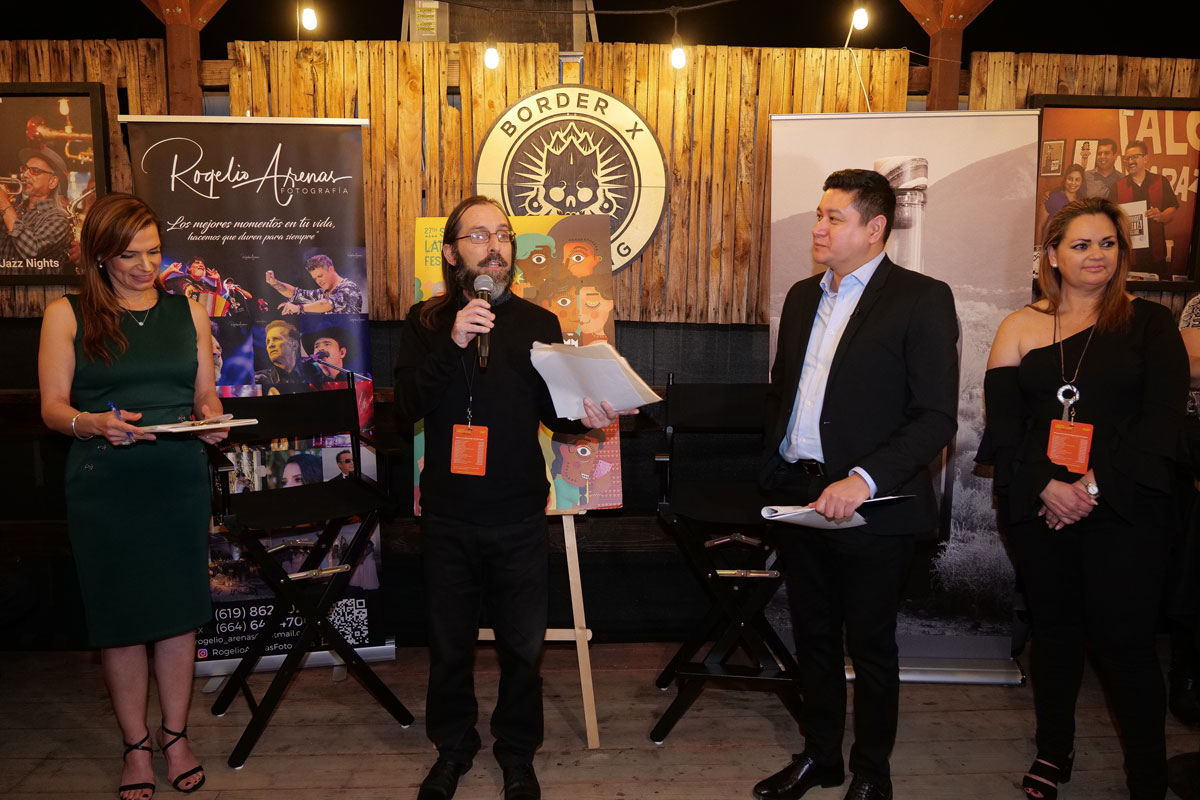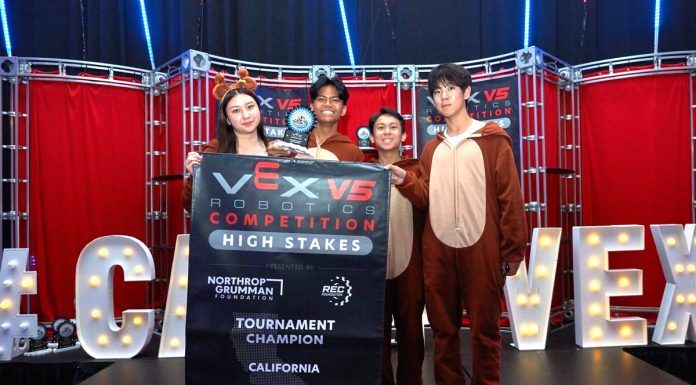
More than 170 films by local, national and international filmmakers will be featured at the 27th annual San Diego Latino Film Festival to showcase the richness of Latino identity and resist the oppression of the Latino community by the Trump administration. The festival was originally scheduled for March 12 to 22 but based on reccomendations by the California Department of Health, the festival has been postponed to help prevent the spread of COVID-19.
The festival was founded with the mission of combating the negative depictions of Latinos in cinema and media, according to the SDLFF website.
“Now the festival’s mission extends beyond this to exist as a direct confrontation to the oppression of the Latinx community by the current administration and its dehumanizing policies,” the SDLFF website reads.
This year’s festival consists of more than 15 film showcases including the second annual Migrant Voices Film Competition, presented by The San Diego Union-Tribune and the SDLFF, which focuses on migrant stories on both sides of the border, and ¡Somos! Cine LGBTQ+, presented by San Diego Pride and Family Health Centers of San Diego.
The Fronteras Filmmakers Showcase specifically highlights filmmakers who use the border region as the backdrop for their narratives.
Chula Vista native and Southwestern College adjunct professor Alexis Duran is one of them. After being a student at SWC and graduating from University of California Santa Cruz, he said his career in film and academia has come full circle now that he’s teaching classes he was once taking as a student.
His four-minute film “Bye Luna” is about a father figure trying to teach his 7-year-old daughter Spanish and her resisting.
Duran, 32, said the film is somewhat based on his own experiences with his former partner’s daughter and the tension he could feel when they spoke Spanish in public, given the current political climate.
“I think you just have to be mindful and aware of what’s going on, yet not let it prohibit you from speaking your native tongue,” Duran said. He added that he hopes the film will serve as a reminder that being bilingual or trilingual is a beautiful thing and people shouldn’t be hesitant or fearful to pass down their native tongue to their children.
When it came to filming “Bye Luna,” Duran said many challenges arose but seeing it all come together to be featured in the SDLFF is gratifying.
“The fact that we’re in San Diego and we have such a large population of Latinos, it’s important to just cater and nurture and exhibit these films and filmmakers, it’s culturally important and vital,” Duran said.
Aldo Sandoval, a 24-year-old National City born UCSD graduate, is another filmmaker whose film is being featured in the Fronteras showcase.
He collaborated with Melissa Hernandez and Ray Velasquez to create a film about Chicano Park for his senior project last year — and the film gained greater exposure than any of them had originally imagined, going beyond the classroom with a screening in Barrio Logan and support from the community.
“It was like homework but we just went the extra step and kept doing more with it,” Sandoval said.
Their 10 minute film, “Chicano Park,” features renowned activist and muralist Salvador Torres and explores modern problems in Chicano Park including trash build up and gentrification.
“I just want them to open their eyes and be more observant of the community an the culture there, there’s a lot of people in Barrio Logan that feel kind of left out ever since these breweries started popping up… if you go to Barrio Logan, be respectful of that community,” Sandoval said.
He added that the SDLFF is important because it allows Latinos to share Latino culture with San Diego’s diverse population.
While Sandoval’s film is San Diego centric, Tijuana native Olimpia Vasquez Ojeda’s film spotlights an indigenous community on the Mexican side of the border, the Paipai women of Santa Catarina, Baja California.
She said she felt inspired to make her film “Ñumshri qchee maat kiob,” or woman who makes pottery, after studying anthropology at UCSC and learning about the Paipai women, who keep their culture alive by making ceramics.
“When I was doing this work as an anthropologist and archeologist I realized that it was really important to communicate that to the general public and provide a platform for the Paipai women,” Ojeda said.
Filming the project took about two weeks but finishing the whole documentary took more than a year, according to Ojeda. She said everyone who worked on the project was also working a full-time job, so creating the film was their “weekend jam,” and the large majority of people who worked on it were women.
“We tried to create a female-led project… we tried to honor that,” Ojeda said. “If we’re talking about women and creating a space for them, we want to keep it as female-based as possible. It’s easily spotted once you see the work.”
The project was funded by a state grant from Baja California that aims to bring attention to and preserve the culture of Baja California, according to Ojeda.
“I think that learning about the Paipai people helped me realize that Mexicans are so different, there is also not one way to be Mexican,” Ojeda said.
Ultimately, she hopes that after seeing the film people will be able to go beyond her work and learn more about the Paipai women or invite them to the cultural spaces they work in.
To learn more about Ojeda’s film and the Paipai women, follow @numshri on Instagram.
Santee native Anthony Grimm, 22, produced “Alone Together,” a film directed by Erin Martinez with a San Diego backdrop in the college area and East County. The seven minute film was inspired by their own relationship experiences and experiments with split screen storytelling to tell two stories at once.
“It is a labor of love,” Grimm said. “I’m crazy proud of this thing and I can’t stop talking about how well it’s doing,”
Since its release in 2019, “Alone Together” has been featured in more than 20 film festivals around the country, which Grimm said is really validating. He added that as a middle class white male, it’s his job to prop up women and especially women of color.
“For us to be able to have a festival like this in our city, I think it’s incredibly important to have more of these to help celebrate culture and not have the white people winning all the time,” Grimm said.
Films will be screened at AMC in Fashion Valley and Digital Gym Cinema in North Park everyday during the ten day festival. For updates on the festival and film screening schedule, visit sdlatinofilm.com.













